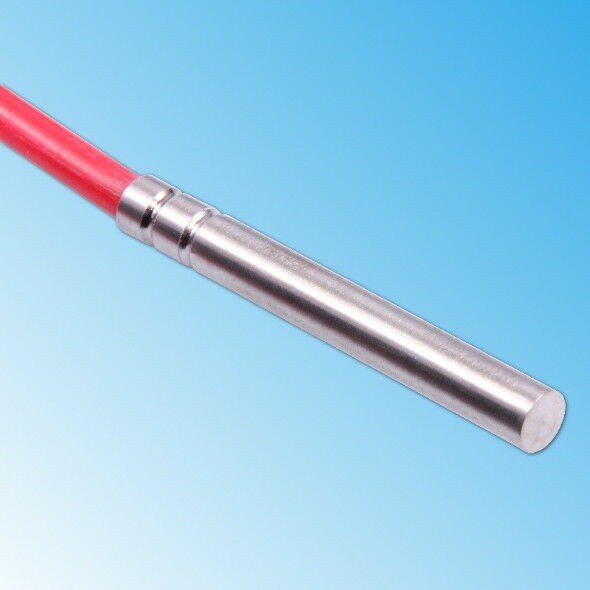-40%
12" RTD Resistance Thermometer, NR-353 Pt-100 Ω with 3 wire 36" cord
$ 5.28
- Description
- Size Guide
Description
12" Resistance Thermometer, NR-353 Pt-100 Ωwith 3 wire 36" cord
Resistance thermometers, also called resistance temperature detectors (RTDs), are sensors used to measure temperature by correlating the resistance of the RTD element with temperature. Most RTD elements consist of a length of fine coiled wire wrapped around a ceramic or glass core. The element is usually quite fragile, so it is often placed inside a sheathed probe to protect it. The RTD element is made from a pure material, typically platinum, nickel or copper. The material has a predictable change in resistance as the temperature changes and it is this predictable change that is used to determine temperature.
R vs T relationship of various metals
Common RTD sensing elements constructed of platinum, copper or nickel have a repeatable resistance versus temperature relationship (R vs T) and operating temperature range. The R vs T relationship is defined as the amount of resistance change of the sensor per degree of temperature change. The relative change in resistance (temperature coefficient of resistance) varies only slightly over the useful range of the sensor.
Platinum was proposed by Sir William Siemens as an element for resistance temperature detector at the Bakerian lecture in 1871: it is a noble metal and has the most stable resistance-temperature relationship over the largest temperature range. Nickel elements have a limited temperature range because the amount of change in resistance per degree of change in temperature becomes very non-linear at temperatures over 572 °F (300 °C). Copper has a very linear resistance-temperature relationship, however copper oxidizes at moderate temperatures and cannot be used over 302 °F (150 °C).
Platinum is the best metal for RTDs because it follows a very linear resistance-temperature relationship and it follows the R vs T relationship in a highly repeatable manner over a wide temperature range. The unique properties of platinum make it the material of choice for temperature standards over the range of -272.5 °C to 961.78 °C, and is used in the sensors that define the International Temperature Standard, ITS-90. Platinum is chosen also because of its chemical inertness.
The significant characteristic of metals used as resistive elements is the linear approximation of the resistance versus temperature relationship between 0 and 100 °C. This temperature coefficient of resistance is called alpha, α. The equation below defines α; its units are ohm/ohm/°C.
Pure platinum has an alpha of 0.003925 ohm/ohm/°C in the 0 to 100 °C range and is used in the construction of laboratory grade RTDs. Conversely two widely recognized standards for industrial RTDs IEC 60751 and ASTM E-1137 specify an alpha of 0.00385 ohms/ohm/°C. Before these standards were widely adopted several different alpha values were used. It is still possible to find older probes that are made with platinum that have alpha values of 0.003916 ohms/ohm/°C and 0.003902 ohms/ohm/°C.
These different alpha values for platinum are achieved by doping; basically carefully introducing impurities into the platinum. The impurities introduced during doping become embedded in the lattice structure of the platinum and result in a different R vs. T curve and hence alpha value











